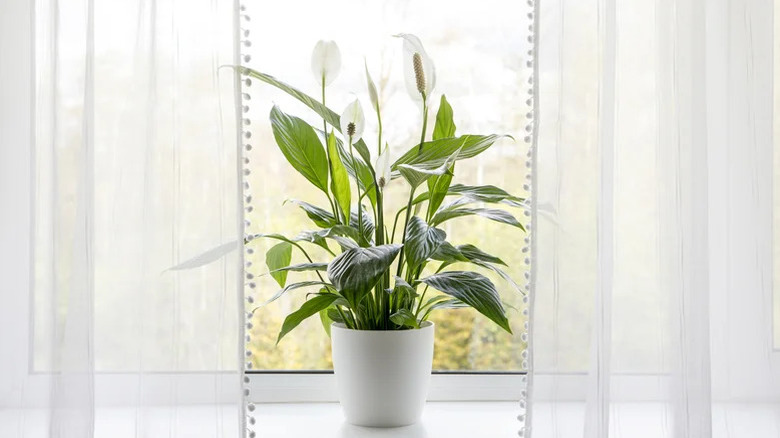The Calming Houseplant You Can Grow That Makes Your Space Feel Fresh
Life comes with all kinds of stressors, and everyone can use a little mental boost. That's where peace lilies (Spathiphyllum) come in. With their glossy green leaves and elegant white blooms, these calming houseplants not only brighten up your home but also help freshen the air, making your space feel more peaceful and inviting. Often associated with calm and fresh beginnings, peace lilies are as functional as they are beautiful. It's a perfect match if you're looking for houseplants that are good for your health as you create a soothing indoor retreat.
Not to be mistaken for true lilies, peace lilies are members of the Arum family. Native to Mexico, tropical regions of the Americas, and islands of the western Pacific, they naturally soften the mood in any room. They're even known to reduce stress by creating a calmer, more serene environment, according to the principles of Feng Shui. Since stress can increase your risk for high blood pressure and other disease, keeping a peace lily nearby doesn't sound like a bad idea.
Available in sizes ranging from small, table-top varieties to larger floor plants that can reach about 3 feet tall wide, peace lilies fit just about any space. The low-maintenance perennial helps clean indoor air by filtering out mold spores and compounds such as benzene and formaldehyde. One thing to keep in mind: Peace lilies contain calcium oxalate, which can be harmful if eaten by pets or children, so it's best to keep them out of reach.
Looking after your peace lilies
Peace lilies are surprisingly easygoing when it comes to light, but they really shine in bright, indirect sunlight. An east or north-facing window is usually perfect, while direct sun can leave leaves scorched. These houseplants thrive in warm, stable temperatures between 68 and 85 degrees Fahrenheit during the day, so avoid placing them near drafts, heating vents, or air conditioners that could stress the plant.
Peace lilies appreciate consistent moisture but don't like to sit in water. Let the soil dry a little before watering again. This is best method for watering peace lilies. If you detect root rot, you may need to trim the roots. A quick test with your finger can help you gauge moisture; if the soil feels dry, it's time to water. Peace lilies don't do well with chemicals in tap water, such as fluoride, which can cause leaf tips to brown. Whenever possible, water with filtered or distilled water to keep them looking their best.
Repotting and propagation are simple ways to maintain a thriving plant. Peace lilies generally like to stay a little snug in their pots, but when you see roots circling the soil surface or poking out of the drainage holes, it's time to move them up to a bigger container. With a bit of TLC, your peace lily will continue to bring serenity, clean the air, and produce blooms.

